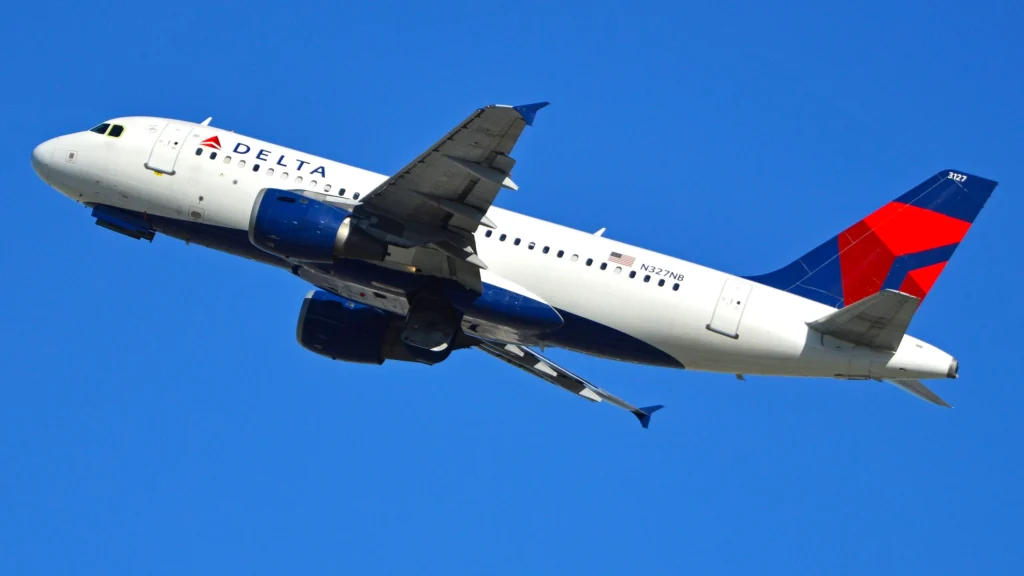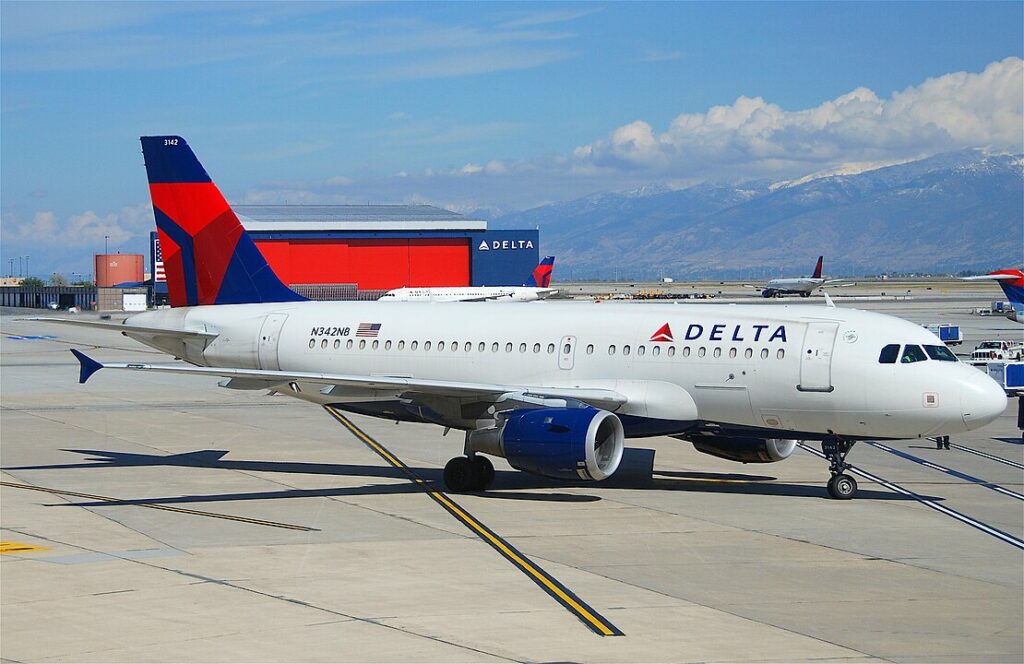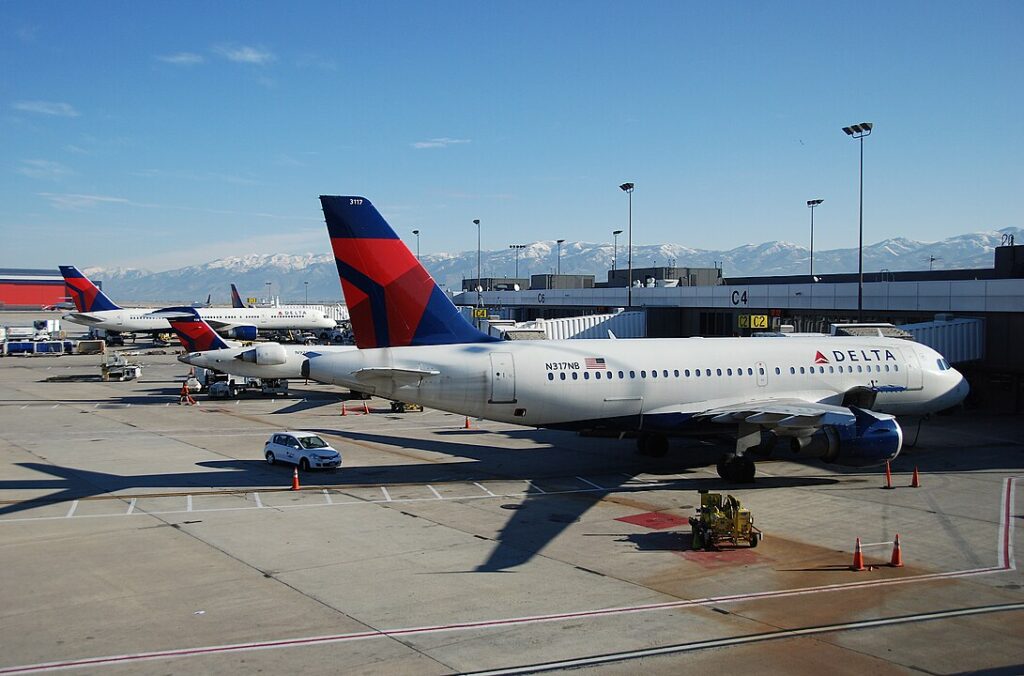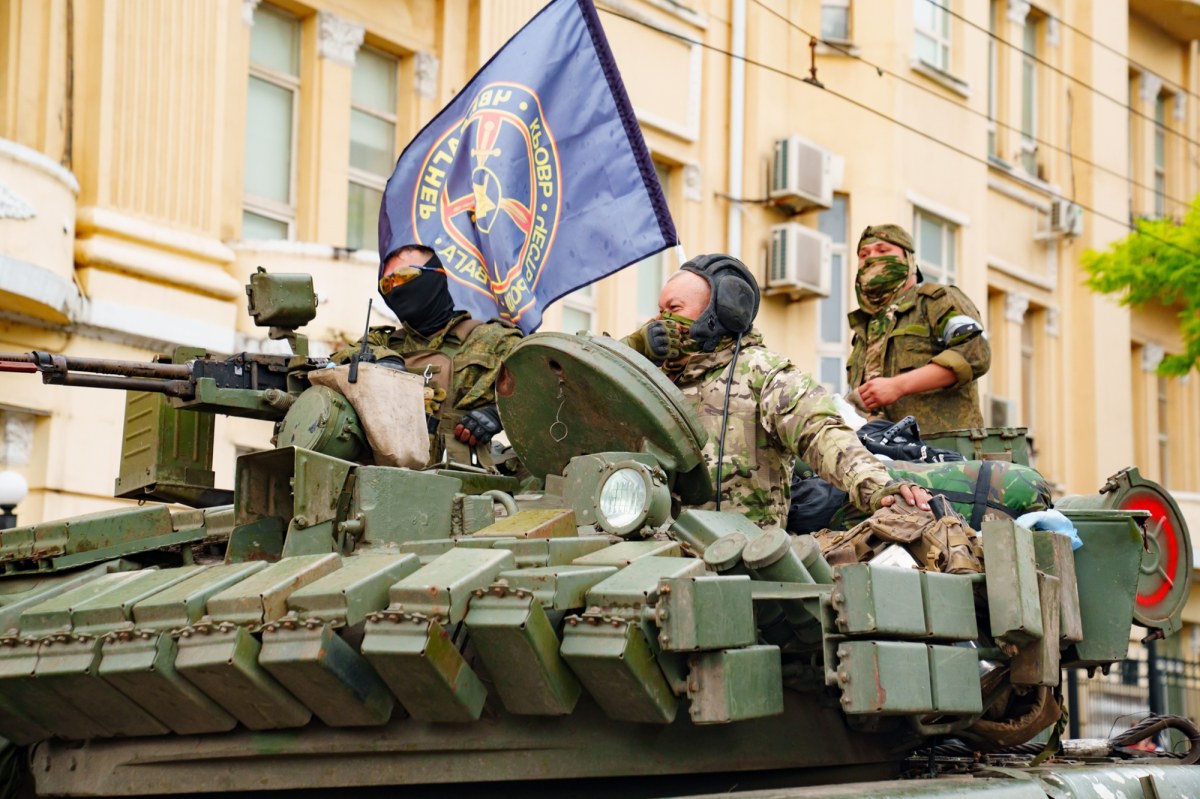
WASHINGTON, D.C- A Delta Air Lines (DL) Airbus A319-100 operating flight DL2983 from Washington National Airport (DCA) to Minneapolis (MSP) narrowly avoided a midair collision with four U.S. Air Force T-38 jets during initial climb on March 28, 2025.
As the aircraft climbed through 1,300 feet after departure from DCA’s Runway 19, the pilots received a TCAS resolution advisory indicating another aircraft was 500 feet below. The near miss occurred near Arlington, Virginia, while the military jets were en route for a ceremonial flyover.
 Photo: By Alan Wilson – Airbus A319-114 ‘N327NB’ Delta, CC BY-SA 2.0, https://commons.wikimedia.org/w/index.php?curid=33925401
Photo: By Alan Wilson – Airbus A319-114 ‘N327NB’ Delta, CC BY-SA 2.0, https://commons.wikimedia.org/w/index.php?curid=33925401Delta A319 Near Miss with US Air Force
The incident involved Delta flight DL2983 and a formation of U.S. Air Force T-38 Talon jets (callsign DRAGO61) operating under military flight rules.
Both aircraft sets came within 100 feet vertically and 0.7 nautical miles horizontally of each other, well below FAA-required separation standards.
The FAA confirmed air traffic controllers provided corrective instructions after onboard TCAS systems alerted the Delta crew to the threat.
The flight proceeded without further issues and landed safely at Minneapolis–St. Paul International Airport (MSP). The FAA launched an investigation, and the NTSB released its preliminary findings on July 3, 2025.
 Photo: By Aero Icarus from Zürich, Switzerland – Delta Air Lines Airbus A319-114; N342NB@SLC;09.10.2011/621dl, CC BY-SA 2.0, https://commons.wikimedia.org/w/index.php?curid=26713181
Photo: By Aero Icarus from Zürich, Switzerland – Delta Air Lines Airbus A319-114; N342NB@SLC;09.10.2011/621dl, CC BY-SA 2.0, https://commons.wikimedia.org/w/index.php?curid=26713181Timeline Reveals Communication Gaps
The NTSB report reconstructed the event, highlighting significant miscommunication and timing errors between the Ronald Reagan Washington National Airport (DCA) tower and the Potomac Consolidated TRACON (PCT) overseeing the DRAGO61 formation.
Key points include:
- At 1515 EDT, DAL2983 was cleared for takeoff.
- A “hard stop” on all departures was to take effect at 1517 EDT, but conflicting interpretations of this timing led to DAL2983’s departure during a restricted window.
- Attempts by the DCA tower to recall or delay the aircraft failed due to a lack of response during the brief handover period to departure control.
Staffing issues compounded the problem. The lone Operations Supervisor had completed their shift, and oversight was being handled by a Controller-in-Charge (CIC), not an OS. Both DCA ATCT and PCT TRACON were operating with minimal available personnel.
Weather and Traffic Volume Not a Primary Factor
Visual meteorological conditions (VFR) prevailed at the time of the incident, with 10 miles of visibility and light winds. Showers were reported northeast of the field, but visibility and ceiling were well within operational limits.
Air traffic volume was described as moderate. Controllers were managing a typical workload, but the complexity increased significantly due to the military formation and overlapping operations with scheduled commercial flights.
 Photo: By Aero Icarus from Zürich, Switzerland – Delta Air Lines Airbus A319-114; N317NB@SLC;09.10.2011621au, CC BY-SA 2.0, https://commons.wikimedia.org/w/index.php?curid=26713105
Photo: By Aero Icarus from Zürich, Switzerland – Delta Air Lines Airbus A319-114; N317NB@SLC;09.10.2011621au, CC BY-SA 2.0, https://commons.wikimedia.org/w/index.php?curid=26713105Airspace Safety Under Scrutiny
This incident has triggered procedural reviews regarding coordination during flyovers, especially at airports with constrained airspace like DCA.
The NTSB’s early analysis points to coordination timing, controller staffing, and communication breakdowns as primary factors in the loss of separation.
No injuries or aircraft damage occurred, but the event highlights vulnerabilities in managing mixed civilian and military airspace operations under tight timing constraints.
Stay tuned with us. Further, follow us on social media for the latest updates.
Join us on Telegram Group for the Latest Aviation Updates. Subsequently, follow us on Google News
Two Delta Flights Forced to Abort Landing at Washington DCA
The post Delta A319 Near Miss with US Air Force: FAA, NTSB Reports appeared first on Aviation A2Z.

 5 miesięcy temu
5 miesięcy temu











